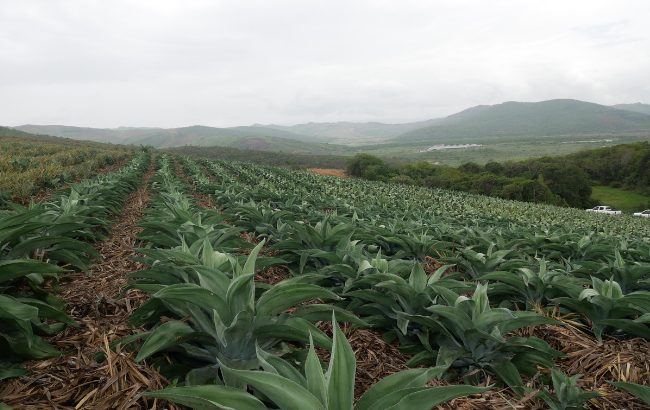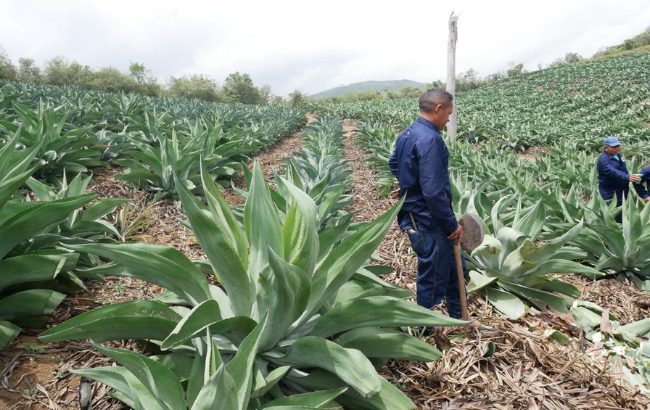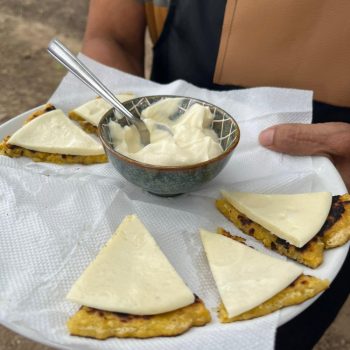SB visits… Cocuy Saroche, Venezuela
By Rupert HohwielerEarlier this summer, The Spirits Business journeyed deep into the heart of the Venezuelan jungle to uncover the secrets behind the country’s leading agave spirit brand: Cocuy Saroche.

Usually when one first thinks of fields of agave it’s Mexico that springs to mind with Tequila’s explosion (and mezcal’s emergence to an extent) over the past 10 years in the US.
However SB’s latest visit to see what’s going on in the world of agave over the summer was a little more off the beaten path – to Venezuela to check on one of the many other agave-producing regions that’s vying for its own break-out moment too.
Leading the charge in Venezuela is a brand called Cocuy Saroche, which is produced by the DUG Group at one of Latin America’s largest distilleries, Destilerías Unidas (also known as Dusa), in the country’s Lara province.
The distillery has a remote jungle-esque location on the foot of the Andes mountains, complete with a gang of howler monkeys who swing by from time to time. As a cliché from the outside, the place looks like it could be the base for some mad person secretly trying to take over the world, but instead, it’s where DUG Group produces nearly every spirit under the sun; from rum to liqueurs to vodka to a small batch gin called Canaïma.
While the production of Cocuy Saroche is carried out at the distillery as well, the hard work begins on the fields of Santa Rosalía, which is where SB headed to first on our visit.
Cocuy Saroche is made from cocui trelease, the agave endemic to Venezuela, and specifically to Lara and its neighbouring state Falcón. These are the only two areas on earth where you can find the plant.

Venezuela has a history of producing cocuy spirit, however its reputation hasn’t always been the best, hampered by limited access to necessary resources and limited investment towards sustainable practices. The impact of the country’s economic and social crisis extends to all industries, unfortunately, including production of cocuy.
Jose Ballesteros Jr, head of DUG’s export department, who was with us on the tour, explained that cocuy spirit has been around for a long time, but amid “a lot of interruptions”.
“The government hasn’t had a strict policy of controlling cocuy, but for many years it was outlawed,” he tells us. “Only people from the land could cultivate agave. They would do a small production, maybe one batch of 20 litres, and that’s it – that was the production and there was no quality control.”
“The main problem with cocuy production in Venezuela is the overexploitation of its raw material, the cardón (agave cocui), whose slow reproduction and maturation process (eight to 10 years) makes sustainability difficult in the face of growing demand,” he adds.
“Cocuy production requires approximately several thousand cocui plants per year, but these are not cultivated – they are harvested from the wild.”
This meant the profile of the product often varied from one cocuy spirit to the other and wasn’t of the greatest sanitary standard either. “It was a mess because you could be giving poison to people,” Ballesteros Jr says. “You didn’t know where it came from.”
He suggests that’s why Cocuy spirit is perhaps not as well-known around the world and why it also doesn’t have the greatest reputation inside Venezuela either.
“People here who drink blended whisky and Scotch, will say: ‘okay, Scotch is from abroad? It’s a very famous product? I will drink it, because for me, it’s a quality product’,” Ballesteros Jr says, continuing that the DUG Group wants that same level of perception for when people think about drinking Venezuelan-made products.
“We want to show the world the finest cocuy and also improve the image of cocuy inside Venezuela as well.”
In 2013, a period of social and political change in Venezuela, the DUG Group began to grow their own cocuy on a 600-hectare farm that has been in the family for more than 70 years. “So we were the only ones who started to plant cocuy in 2013 in large land extensions,” Ballesteros Jr explains.
“There are now new producers who have started recently in small farms, and that’s good, but they will need more time to get a sustainable production process. This requires patience and discipline.”
While there’s others in Lara and Falcon who make cocuy spirit, they don’t own their own land and they certainly don’t plant their own agave, like the DUG Group does, which Jose Jr tells us is a clincher in getting out the best possible product as they control their production. “Other producers might find a farmer and say: ‘okay, I need 500 agaves’. But if you pick wild agave today, yes there’s some plants, but not the next day – it takes at least six years to grow.
“That’s why we have been planting agave every day since 2013, in order to have a sustainable quantity of maturing agave. That is our point of differentiation to maintain the quality of the product over time.”

Introducing a new category
Dusa plants between 40,000 to 60,000 agaves per year, with the harvest typically taking place in the first quarter of the year, between January to February. At the time of our visit (in June) there were around 2,000 agave plants in the field. The distillery can then makes up to 50,000 litres of Saroche annually.
And on our visit to Santa Rosalía, we caught the fields on a rare rainy day, an uncommon occurrence according to the team, and perhaps a classic case of us bringing the British weather over. That being said, it was noted that the rain wasn’t the end of the world, as it helps strengthen the plants and also gets them producing more sugar.
Cocui doesn’t grow alone in the fields, it has a partner in pineapple, which helps protect the soil around the agave from parasites and other things that could ruin its lifecycle, like weeds, which are unable to grow around the fruit’s dried leaves. Pineapple then acts as a natural compost, fertilising the soil.
The pineapple trade is also quite strong in Venezuela, we’re told, with a dozen or more trucks coming down before 5am to take the fruit across Venezuelan cities for selling.

The pineapple joins the agave on the soil once the cocui turns six months old. It grows for around three years, while the agave up the ante and extends to six or seven. Once the pineapple has completed its cycle, it is cut out and the cocui is left to mature on its own.
Getting up close to the cocui plants (but not too close… these things are razor sharp), they’re also noticeably smaller than their Blue Weber relatives with more rounded leaves, and a lot lighter. The piñas from Blue Weber might weigh up to 90kgs, but cocui is pushing more towards the 40kg area (still heavy, mind).
The fibers are also strong, to the point where they hold up as the base for traditional shoes (called cocuizas) and instruments like baskets and even hammocks.
While it’s easy with Saroche to dive straight in with the Tequila and mezcal comparisons, and go from there, this is part of the challenge in terms of getting the spirit recognised internationally, Ballesteros Jr believes.
“They might be the same original material, from the same species, but it’s a different family of agave. They’re completely different products and we don’t need to compare – we need to separate,” he emphasises.
The DUG Group ships 12,000 nine-litre cases a year of Saroche, with overseas markets including the US (the main market) and Europe, as interest in agave from that continent picks up with availability in Spain, France, Italy and Czech Republic.
For the DUG Group, it’s about establishing a new category that the world isn’t aware of yet, rather than being lumped into an already existing one like Mexico’s agave sector. Moreover, Cocuy is also a cultural product with its own national identity and climatic nuances.
Ballesteros notes that this creates a challenge, because “how can you teach somebody something new?,” he muses.
“People cannot familiarise themselves with something they don’t know. Once you make comparisons, you’ll know it’s so different. If you are not here, you cannot understand this.”

Production process
Back to the visit – while we didn’t witness this part, once the lifecycle is up, the cut piñas are transported back to the factory at Dusa to be turned into spirit.
For the production process, this where the Tequila similarities ring true in a way, as the piñas are packed in single file onto a conveyor belt, sort of like suitcases heading off to their destination at the airport, before being dropped and cooked in brick steam ovens (48 hours at 96°), left to cool for 24 hours and then shredded with fibres cut and grounded into juice through a grinding tandem.
Dusa also uses steam that the distillery itself produces from boilers, not fire, to cook the agave.
The juices are then fermented for 36 to 48 hours at around 35°, in open tanks with yeasts that the distillery has cultivated in its own labs. Of the next stage, the fermented liquid undergoes a double distillation in two copper pot stills, first at 35% ABV, and then again at 70% ABV. The DUG Group has an advantage here compared to the rest of the playing field, as the rest of Venezuela’s cocuy makers don’t have copper stills in their possession.
As a side note, the team adds that the bagasses from the process, or vegetable residue, is used to feed the distillery’s livestock – of cattle and buffalo – and counts for 5% of their diets. “We produce alcohol from grains, from corn in our case, so cattle eats the corn and this residue is really good for them to gain weight,” Ballesteros Jr explains of the ecosystem.

Once we’d seen enough of the technical side of things, it was time to hang our hard hats up and return to the tasting room for a sample of Saroche, although truthfully we’d already had a bit at the fields – in Palomas mixed with a pink grapefruit soda that DUG Group produces under its mixer brand, Nueve Grados 9 (they really do make everything).
Onto the tasting, as a general point Saroche has fresh notes, “almost like a menthol”, Ballesteros Jr specifies. It’s also very mineral in its profile, which is similar to Tequila, plus a slightly herbal tone and with a sweet fruity flavour thanks to its time in the soil next to pineapple. Additionally, no smoky aromas or flavours were detected from anyone on the table (so to double down that Venezuelan mezcal, it is not).
Ballesteros Jr shared a personal story from when he attended a wedding, to emphasis one of the distillery’s goals with Saroche. “I brought some bottles of Cocuy with me,” he says, “and there were some Mexican friends there who asked me: ‘Okay, what is Cocuy? Let me understand it’.
“For them, it was difficult to understand it properly until they tasted the product. Once they tasted it, they realised it was a different profile to what they know of Tequila or mezcal. It was very interesting to me, because we are proud to have something quite unique and different to what Mexico has.
“If you compare the production process, you can say, ‘okay, it’s similar to Tequila’, to get an initial understanding, but the result of the product is very different to what Tequila is. We need to change the mindset to the stage where it’s just ‘cocuy’.
“You don’t need to compare. It’s cocuy and that’s it.”
Related news
Australian agave spirits brand Beudi launches
